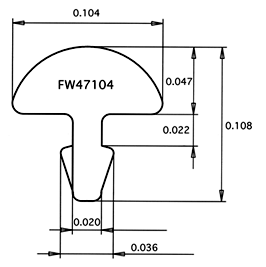Slobrain:
I plan to practice on my ~1998 blue Epiphone Casino- the original blue guitar! I thought that the fret ends stuck out too much so I started filing them down a little bit. But it turned out to be a little bit too much and unless you were fretting the high E string dead center it would slip off the side of the guitar...
That guitar had all sorts of little rattles. Like the tune-a-matic bridge- the threads on the studs did not match the threads on the body. (I got some bolts with the correct thread and cut them to length.)
I need to measure the radius of the Epiphone neck so I can order frets for that guitar as well as the PRS.
Jumbo frets. I like guitars that came with them from the factory but I think that you can have intonation problems if you replace super tiny frets with super big ones. I'll have to measure the frets on a 2012 SE Custom semi-hollow to make sure that I am ordering the right ones.
So with the frets removed from a fretboard what is the advantage of the notched straightedge?
Steve
I plan to practice on my ~1998 blue Epiphone Casino- the original blue guitar! I thought that the fret ends stuck out too much so I started filing them down a little bit. But it turned out to be a little bit too much and unless you were fretting the high E string dead center it would slip off the side of the guitar...
That guitar had all sorts of little rattles. Like the tune-a-matic bridge- the threads on the studs did not match the threads on the body. (I got some bolts with the correct thread and cut them to length.)
I need to measure the radius of the Epiphone neck so I can order frets for that guitar as well as the PRS.
Jumbo frets. I like guitars that came with them from the factory but I think that you can have intonation problems if you replace super tiny frets with super big ones. I'll have to measure the frets on a 2012 SE Custom semi-hollow to make sure that I am ordering the right ones.
So with the frets removed from a fretboard what is the advantage of the notched straightedge?
Steve
 << the wire from PL
<< the wire from PL  << I like this wire from stewmac for refrets. The long tang really holds well.
<< I like this wire from stewmac for refrets. The long tang really holds well.

Comment